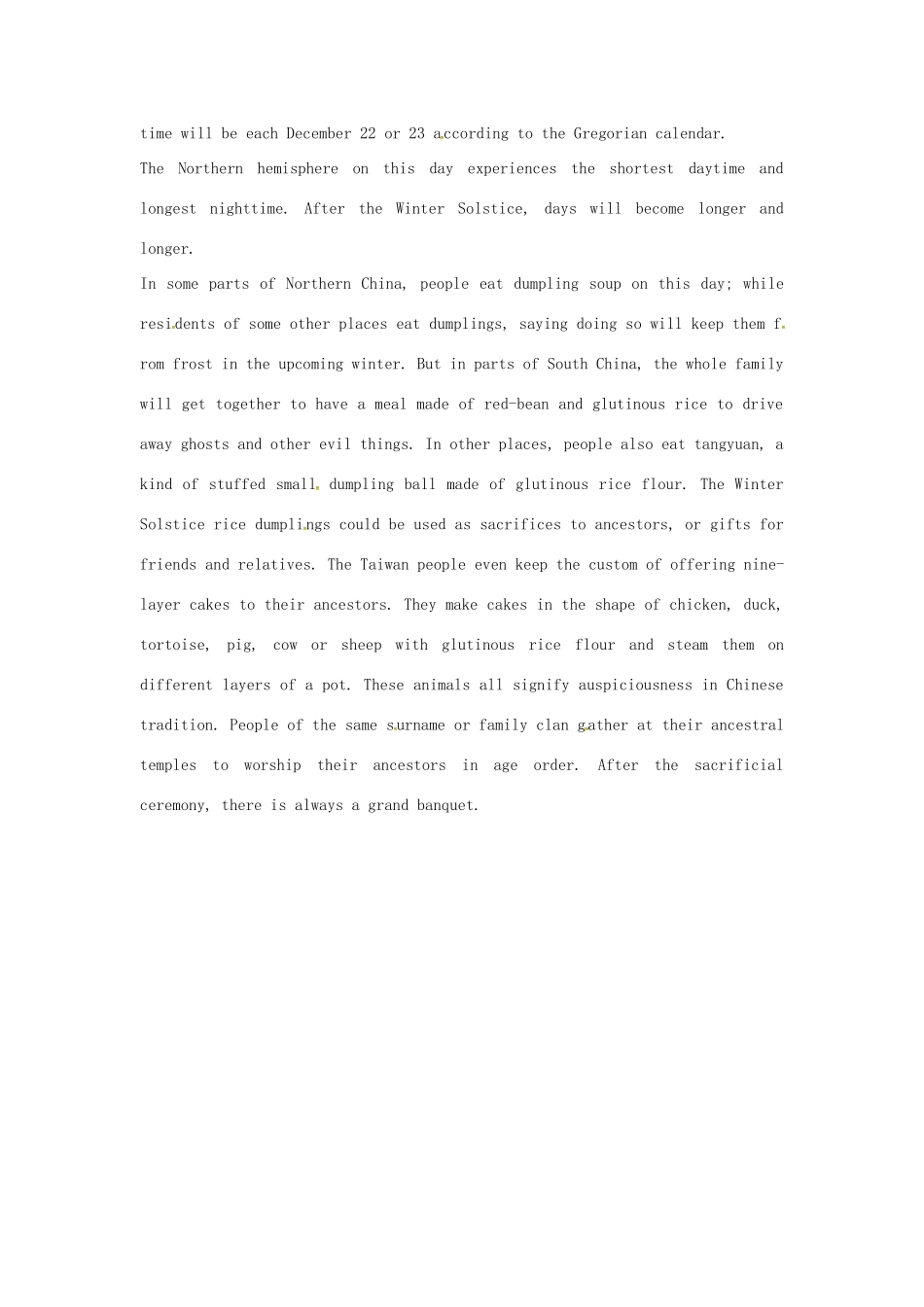Some Chinese traditional festivals Spring FestivalThe Spring Festival is the most important festival for the Chinese people and is when all family members get together, just like Christmas in the West. All people living away from home go back, becoming the busiest time for transportation systems of about half a month from the Spring F estival. Airports, railway stations and long-distance bus stations are crowded with home returnees. The Spring Festival falls on the 1st day of the 1st lun ar month, often one month later than the Gregorian calendar. It originated in the Shang Dynasty (c. 1600 BC-c. 1100 BC) from the people's sacrifice to gods and ancestors at the end of an old year and the beginning of a new one.Mid-Autumn FestivalThe Mid-Autumn Festival falls on the 15th day of the 8th luna r month, usually in October in Gregorian calendar. People in different places follow various customs, but all show their love and longing for a better life. Today people will enjoy the full moon and eat moon cakes on that day. The moon looks extremely round, big and bright on the 15th day of each lunar month. People selected the August 15 to celebrate because it is a season when crops and fruits ar e all ripe and weather pleasant. On the Mid-Autumn Festival, all family members or friends meet outside, putting food on tables and looking up at the sky while talking about life. How spl endid a moment it is!Winter SolsticeAs early as 2,500 years ago, about the Spring and Autumn Period (770-476 BC), China had determined the point of Winter Solstice by observing movements of the sun with a sundial. It is the earliest of the 24 seasonal div ision points. The time will be each December 22 or 23 according to the Gregorian calendar.The Northern hemisphere on this day experiences the shortest daytime and longest nighttime. After the Winter Solstice, days will become longer and longer. In some parts of Northern China, people eat dumpling soup on this day; while residents of some other places eat dumplings, saying doing so will keep them from frost in the upcoming winter. But in parts of South China, the whole family will get together to have a meal made of red-bean and glutinous rice to drive away ghosts and other evil things. In other places, people also eat tangyuan, a kind of stuffed small dumpling ball made of glutinous rice flour. The Winter Solstice rice dumplings could be used as sacrifices to ancestors, or gifts for friends and relatives. The Taiwan people even keep the custom of offering nine-layer cakes to their ancestors. They make cakes in the shape of chicken, duck, tortoise, pig, cow or sheep with glutinous rice flour and steam them on different layers of a pot. These animals all signify auspiciousness in Chinese tradition. People of the same surname or family clan gather at their ancestral temples to worship their ancestors in age order. After the sacrificial ceremony, there is always a grand banquet.

